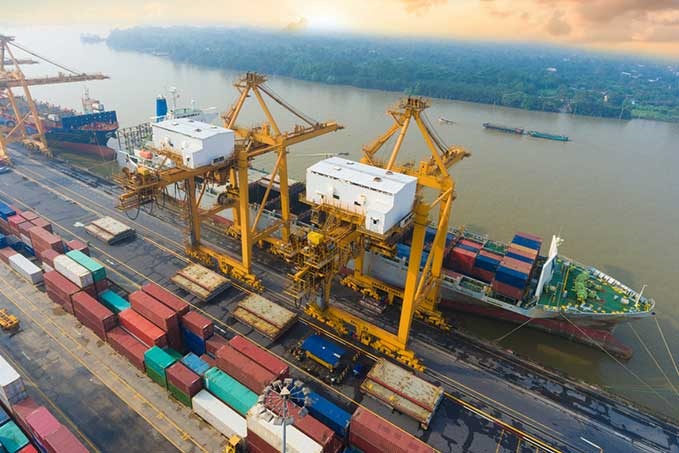
Image Source: Google
Drayage carriers play a crucial role in the smooth functioning of the supply chain. They are responsible for transporting goods over short distances, typically within the same metropolitan area or region. Understanding the role of drayage carriers in supply chain management is essential for businesses looking to optimize their logistics operations and improve overall efficiency.
The Basics of Drayage Carriers
Drayage carriers are responsible for transporting shipping containers and cargo between various points such as ports, rail yards, warehouses, and distribution centers. Here are some key points to understand about drayage carriers:
- They operate locally or regionally, providing short-haul transportation services.
- Drayage carriers use trucks, typically dray trucks or chassis, to move containers.
- They play a vital role in the first and last mile of the supply chain, connecting different modes of transportation.
- Drayage services are essential for facilitating timely and efficient movement of goods.
Benefits of Using Drayage Carriers
Businesses can benefit significantly from leveraging drayage carriers in their supply chain operations. Some of the key advantages include:
- Improved efficiency: Drayage carriers help streamline the transportation process, reducing delays and ensuring timely delivery of goods.
- Cost-effective: Using drayage services can be a cost-effective solution for short-distance transportation needs, especially in urban areas.
- Flexibility: Drayage carriers offer flexibility in managing fluctuations in demand and adjusting transportation routes as needed.
- Reduced risk: By outsourcing drayage services to experienced carriers, businesses can mitigate risks associated with transportation operations.
Integration with Supply Chain Management
Integrating drayage carriers into the overall supply chain management strategy is essential for optimizing logistics operations. Here are some key considerations for effectively integrating drayage services:
Collaboration with Other Transportation Modes
Drayage carriers play a crucial role in connecting different modes of transportation within the supply chain. Collaborating with other transportation providers, such as ocean carriers, railroads, and trucking companies, is essential for seamless cargo movement. By integrating drayage services with other transportation modes, businesses can achieve greater efficiency and cost savings.
Technology Integration
Utilizing technology solutions such as transportation management systems (TMS) can help streamline communication and coordination with drayage carriers. By leveraging TMS platforms, businesses can track shipments in real-time, optimize routes, and ensure transparency in the transportation process. Integrating technology into drayage operations enhances visibility and control over the supply chain.
Performance Monitoring and KPIs
Establishing key performance indicators (KPIs) and monitoring the performance of drayage carriers is essential for ensuring service quality and adherence to service level agreements. By tracking metrics such as on-time delivery, dwell times, and customer satisfaction, businesses can evaluate the performance of drayage carriers and make data-driven decisions to improve overall supply chain efficiency.
Challenges and Solutions
While drayage carriers offer numerous benefits to supply chain management, they also face certain challenges that can impact operations. It is important for businesses to be aware of these challenges and implement solutions to overcome them effectively.
Infrastructure Constraints
Infrastructure limitations, such as congestion at ports and rail yards, can pose challenges for drayage carriers in moving goods efficiently. To address this issue, businesses can explore alternative routes, schedule deliveries during off-peak hours, and collaborate with stakeholders to improve infrastructure capacity.
Regulatory Compliance
Drayage carriers are subject to various regulations governing transportation practices, environmental standards, and labor laws. Ensuring compliance with regulatory requirements is crucial to avoid penalties and disruptions in operations. Businesses can maintain compliance by staying informed about regulatory changes, implementing training programs for drivers, and partnering with reputable carriers that prioritize compliance.
Driver Shortages
The trucking industry, including drayage carriers, faces challenges related to driver shortages and high turnover rates. To address this issue, businesses can implement driver retention strategies, offer competitive compensation packages, and provide training opportunities for professional development. Building strong relationships with drivers and investing in their well-being can help mitigate driver shortages and ensure reliable transportation services.
Conclusion
Drayage carriers play a vital role in supply chain management, connecting different points in the transportation network and facilitating the movement of goods. By understanding the functions and benefits of drayage services, businesses can enhance their logistics operations, improve efficiency, and drive overall supply chain performance. Integrating drayage carriers with other transportation modes, leveraging technology solutions, monitoring performance metrics, and addressing challenges effectively are key strategies for optimizing drayage operations and achieving supply chain excellence.